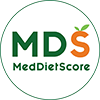Fruit Availability Increases Consumption Beyond the Individual
Eating more fruits and vegetables is an integral part of The Mediterranean Diet, and the effects of more fruits and vegetables in the diet range from reduced risk of heart disease and stroke, to protection from benign prostatic hyperplasia and diabetes.
As you are probably aware, most Americans don't eat enough fruits and vegetables, and there's been quite a bit of discussion of ways to get people to eat more. Increasing the amounts of fruits and vegetables that are actually available for people to purchase has been one of the most widely discussed strategies: decreasing so-called "food deserts" is one strategy that's received a lot of attention.
Simply increasing availability has had mixed effects, however. One study showed that more supermarkets and grocery stores within walking distance did not necessarily improve people's overall diet (Bite, 07/13/11), while on the other hand, children whose schools restricted access to junk food were more likely to eat more fruits and vegetables than the kids who were able to buy junk at school (Bite, 04/01/09).
In a study funded by the Preventive Health and Health Services Block Grant of the Centers for Disease Control and Prevention and the United States Department of Agriculture Supplemental Nutrition Assistance Program Education (SNAP-Ed), researchers in California sought to find out if making fresh fruit available to low-income workers in their workplace might not have an effect on not only their individual fruit consumption, but if that effect might not extend beyond the workplace and into their homes (J Nutr Educ Behav 2011;43:S113-S121).
The over 550 persons working at 9 different work sites in Central Los Angeles were recruited to participate in the study. Seven of these work sites were apparel manufacturers, while the other 2 were food service manufacturers. The workers were overwhelmingly Latino/a (97%+), averaged about 33 years of age, and their average wage was $7.75 per hour. Most of the workers did not receive employer-sponsored health benefits.
The researchers grouped the work sites into two groups of approximately equal numbers of workers, then randomly designated the groups as intervention or control groups.
Throughout the 12 weeks of the study, fruit was delivered to the intervention worksites three times per week. Each delivery included enough fresh fruit that each worker could choose to have one piece of fruit, and the fruit was made available to the employees at no cost during their breaks. The control groups received no fruit shipments during the study period (although they did receive fruit shipments for the 12 weeks after the study period).
At the start of the study and every 4 weeks thereafter, employees in both intervention and control groups responded to questionnaires that asked, among other things, about the amount of fruits and vegetables they had eaten in the previous month, how much fruit and vegetables had been purchased to be eaten at home by their family, and whether they felt that their health had improved, remained the same, or if it had worsened.
As you might guess, the control group's fruit and vegetable consumption, both on the job and at their home, did not change during the study. Those who did receive the free fresh fruit, however, indicated that not only did they themselves eat more fruit and more vegetables, they actually purchased more fruit for themselves. The amounts of vegetables that were purchased for consumption in their home also increased (although the purchasing of fruit for the home did not).
What this means for you
At first blush this seems obvious: if the fruit is free, people are more likely to eat it. But what's interesting is that the workers reported purchasing more fruit for themselves to eat, which indicates that cost is not as much of a factor as you might think. Even more interesting is that making more healthy options available at work appeared to be related to more vegetables at home. And as we know from other studies, if it's in the home people are more likely to eat it, whatever it is (Bite, 05/20/09).
First posted: August 17, 2011




